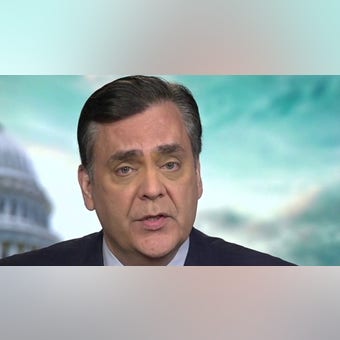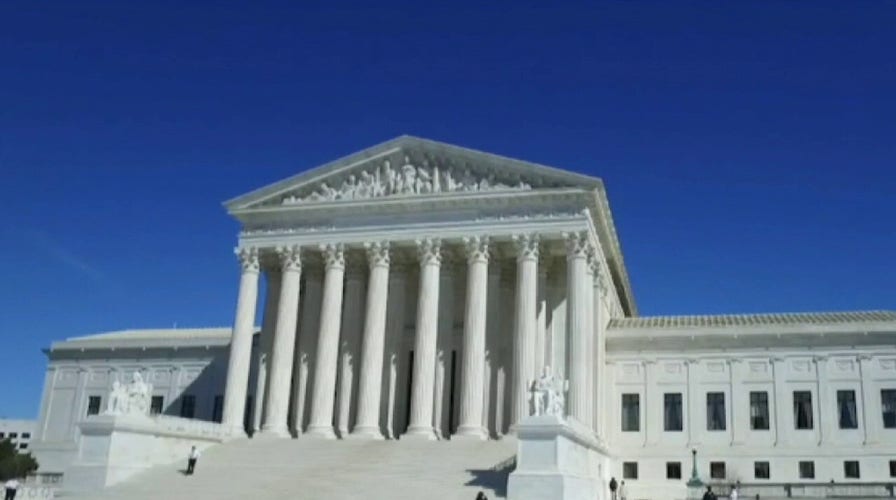Biden Supreme Court commission meets for first time as key abortion case looms
Judicial Crisis Network President Carrie Severino breaks down the significance and timing of the case challenging Roe vs. Wade.
Tuesday the Supreme Court issued two more unanimous decisions in Garland v. Dai and United States v. Cooley. This follows two unanimous decisions last week. The weekly display of unanimity is notable given the calls by Democratic leaders to pack the court.
This week I wrote on my blog about how the heavy-handed campaigns might backfire with the justices. As we await important and likely divided decisions on issues like abortion, Chief Justice John Roberts and his colleagues seem to be sending a message that the court is not as rigidly ideological as Democratic members and activists suggest.
In the Garland case, the court ruled (again) unanimously to reverse the Ninth Circuit in an opinion written by Justice Neil Gorsuch on the rule in immigration disputes regarding the credibility of noncitizens’ testimony.
In Cooley, the court unanimously ruled in an opinion by Justice Stephen Breyer that a tribal police officer has authority to detain temporarily and to search a non-Native American traveling on a public right-of-way running through a reservation.
SUPREME COURT PREPARES FINAL PUSH TO RELEASE HOT-BUTTON RULINGS, AMID RETIREMENT TALK
Last week, there were two unanimous opinions making this six 9-0 rulings in two weeks. Justice Sonia Sotomayor wrote the opinion in United States v. Palomar-Santiago, an immigration decision that ruled for the government and against an immigrant. It also ruled unanimously in Territory of Guam v. United States, in an opinion written by Justice Clarence Thomas. The court ruled in favor of Guam on the collection of funding from the U.S. government to remediate environmental pollution on the island.
This is an extraordinary litany of unanimous decisions and could in part reflect an implied message from the justices that this is a court that is not nearly as rigid and divided as some believe.
Recently, Breyer warned against any move to expand the Supreme Court. He also rejected the characterization of the current court as "conservative" or ideologically rigid.
Breyer was swiftly denounced by figures like cable news host Mehdi Hasan, who said he was "naive" and called for his retirement.
Demand Justice, a liberal group calling for court packing, had a billboard truck in Washington the next day in the streets of Washington warning "Breyer, retire. Don’t risk your legacy." (Demand Justice once employed White House press secretary Jen Psaki as a communications consultant, and Psaki was on the advisory board of one of its voting projects.)
DEMOCRATS SLAMMED BY CONSERVATIVES OVER RENEWED COURT-PACKING THREATS IF CASES DON’T GO THEIR WAY
Other justices have denounced such court-packing schemes. Shortly before she died, Ruth Bader Ginsburg publicly warned against the move: "If anything would make the court look partisan, it would be that – one side saying, ‘When we’re in power, we’re going to enlarge the number of judges, so we would have more people who would vote the way we want them to.’"
Nevertheless, Democratic members have continued to call the court, to use Joe Biden's words, "out of whack" due to the conservative majority. Senate Majority Leader Chuck Schumer, D-N.Y., and more recently Sen. Richard Blumenthal, D-Conn., have warned conservative justices of dire consequences for the court if they did not rule with their liberal colleagues on high-profile cases expected in the next two weeks.
Rep. Alexandria Ocasio-Cortez, D-N.Y., not only endorsed the court-packing scheme but went even further, questioning why we should listen to just nine people on such important questions. She appeared to question the very basis for Marbury v. Madison – the case laying the foundation for the Supreme Court in our constitutional system.
More from Opinion
AOC challenged the role of the court in overturning laws. She questioned "just, functionally, the idea that nine people, that a nine person court, can overturn laws that thousand – hundreds and thousands of legislators, advocates and policymakers drew consensus on." She then added\, "How much does the current structure benefit us? And I don’t think it does."
The scheduling of these unanimous opinions may be the court clearing its throat on these campaigns and threats.
CLICK HERE TO GET THE OPINION NEWSLETTER
The litany of unanimous rulings amplifies the fact that most cases are resolved with compromise and different alignments of the justices. There are always "big ticket" cases that produce more ideological divisions but they are the exception rather than the rule for the court. These are honest ideological differences and we want the justices to be consistent on their underlying principles. However, most of the work of the court remains less ideologically driven on issues ranging from statutory interpretation to evidentiary rules.
There remains a bright-line preventing justices from speaking on political issues or controversies, though this rule is sometimes honored in the breach. However, there are times when the justices speak loudest through their opinions, particularly when they speak with one voice.
CLICK HERE TO GET THE FOX NEWS APP
In these cases, the justices are discussing different subjects but they clearly want the public to see them speaking as one.
One court. Unpacked and undivided.




